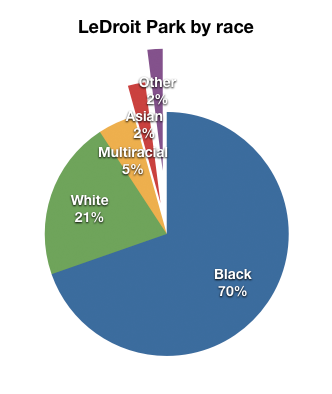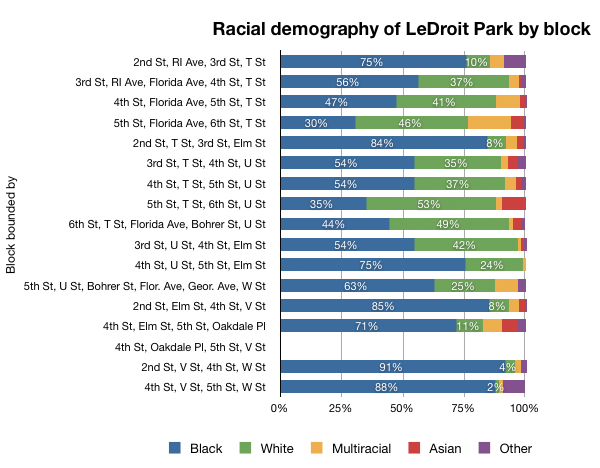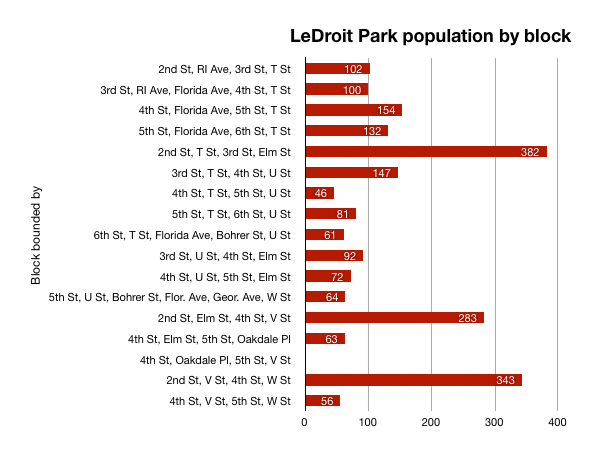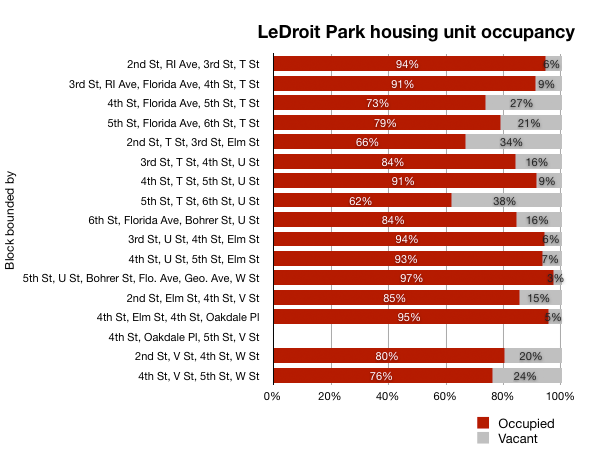Marc Morgan running for LeDroit Park’s ANC seat
 Marc Morgan, President of the LeDroit Park Civic Association, is running unopposed for ANC 1B01, the seat that covers most of LeDroit Park. Myla Moss, our current ANC commissioner, has decided to retire from the seat she has held since January 2005.
Marc Morgan, President of the LeDroit Park Civic Association, is running unopposed for ANC 1B01, the seat that covers most of LeDroit Park. Myla Moss, our current ANC commissioner, has decided to retire from the seat she has held since January 2005.
Since I serve as Mr. Morgan’s campaign chair, I will share with you reasons you should vote for him in November.
For the past two years, Marc Morgan has served as President of the LeDroit Park Civic Association and has worked to bring the residents of the neighborhood together by hosting a mix of social activities and informational programs. Additionally, Mr. Morgan has been a strong advocate for the neighborhood by lobbying District agencies, including the DC Housing Authority, DC Water, and the District Department of Transportation, to better respond to problems facing residents in LeDroit Park.
For example, Mr. Morgan coordinated meetings between the residents of the Kelly Miller apartments and the DC Housing Authority to address crime, building deterioration, and youth engagement.
Last fall Mr. Morgan also coordinated the first annual LeDroit Park Oktoberfest, a neighborhood celebration that highlighted LeDroit Park’s diversity and offered activities for residents of all ages. Additionally, he has created a monthly neighborhood happy hour that provides neighbors an opportunity to meet and talk in a relaxed setting.
More recently, Mr. Morgan has work with the Metropolitan Police Department to address crime in LeDroit Park. Mr. Morgan continually pushes for increased police presence and responsiveness. Mr. Morgan also advocates measures to prevent crime and has consulted local residents and businesses to identify and report suspicious activity.
Within the next few weeks, he plans to roll out a new initiative that calls for increased police presence, identification of criminal hotspots, and crime prevention education in both LeDroit Park and Bloomingdale. The overall objective is to reassure residents that LeDroit Park and Bloomingdale are safe, thriving neighborhoods.
Outside of community activism, Mr. Morgan is the Director of Development for the American Council On Renewable Energy (ACORE), a non-profit dedicated to promoting the use of renewable energy.
Morgan has been a resident of Ward 1 for over 12 years and has spent the last 4 years in LeDroit Park. For more information, you can visit his website or Facebook page.
Census data for LeDroit Park
In preparation for redistricting Ward 1’s ANCs, the DC Office of Planning has released block-by-block demographic data for the District. We have combined the data for the blocks that comprise LeDroit Park to create a LeDroit Park census.
Analyzing U.S. Census data for LeDroit Park proves difficult because the of the way census tracts are drawn. Our census tract, 34, combines LeDroit Park and Howard University. Dorms on the northern end of the campus, far away from LeDroit Park, account for 717 of the tract’s 4,347 residents, thus skewing tract data. Furthermore, the tract also inclues several blocks bounded by Rhode Island Avenue NW, Florida Avenue NW, and 2nd Street NW.
Fortunately, the Census Bureau provides data for each block, allowing us to combine the statistics for those blocks in LeDroit Park, while excluding the Howard University campus. In the map below, we have outlined the tract in blue and shaded the blocks for LeDroit Park in red.
View LeDroit Park Census in a larger map
Though LeDroit Park started out as an exclusively white suburban neighborhood, by 1910 the neighborhood was almost entirely black. Today, 100 years later, the neighborhood is 70% black and is continuing to diversify.

However, when looking at the numbers on a block-by-block basis, you see that the neighborhood demography, must like that of the District itself, is unevenly distributed.
The block bounded by 5th Street, T Street, 6th Street, and U Street is 53% white, the highest in the neighborhood. Likewise, the block containing the Kelly Miller public housing is 91% black, the highest percentage in the neighborhood. The block containing the arch and the Florida Avenue Baptist Church comes closest to black-white equilibrium at 44% and 49% for each group respectively.

When looking at total population numbers for each block, you see that the two most populous blocks contain Howard University dorms. The block bounded by 2nd Street, T Street, 3rd Street, and Elm Street has 382 residents and contains Slowe Hall, which houses 299 students.
The second most populous block contains the new park. However, it also contains Carver Hall, which itself houses 173 students. Certainly these blocks are big, but the fact that their population numbers are off the chart has more to do with student dorms than with any inherent difference in housing density.

Finally, when we look at housing vacancy, we see that the block bounded by 5th Street, T Street, 6th Street and U Street has 38% of its housing units vacant. We’re not sure what’s causing this number, but we suspect that the apartment building at 5th and U Streets NW boosted the vacancy rate. The building has since been finished and is fully rented.
The block with the second-highest rate of vacancy contains the now-renovated Ledroit Place condo building at 1907 3rd Street NW.

It would be interesting too look at other data, including household income, car ownership, and age distribution for the neighborhood. However, the Office of Planning’s spreadsheet only covered population numbers, racial distribution, and housing unit numbers, so those are the metrics we graphed.
LeDroit Park c. 1941
A few months ago we found this old photo at the Washingtoniana Division of the MLK Library. The photo is an aerial view looking westward on the north end of LeDroit Park. Griffith Stadium, now the site of Howard University Hospital, rests in the background; the stadium was demolished in 1965. To its right (north) is the location to which the Freedman’s Hospital moved in 1869. One will also notice that rowhouses stood on what is now the Gage-Eckington site. Looking closely between V and W Streets, one will see that the Kelly Miller public housing apartments appear to be under construction, dating this photo to around 1941.
(If you’d like to zoom on the photo below, download it as a PDF)

We also found a Washington Senators fan site with a 1960 photo of the stadium in the midst of a game.







Recent Comments